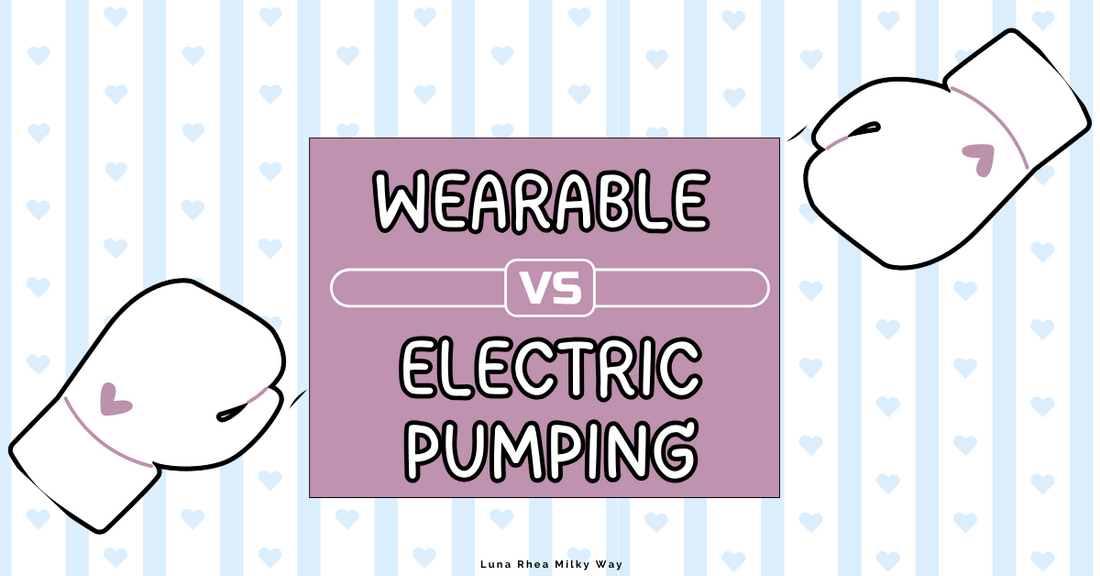
Wearable vs Electric Breast Pumps
So you’ve decided to add pumping as a means to feed your baby. Now the question is–do you go with a wearable pump or an electric pump? You’re probably figuring out motherhood is no one-size-fits-all and pumps are no different. That’s why variations exist–it all depends on many lifestyle factors.
Breast pumping at home or on the go? Shop our patented Luna Rhea breastfeeding and pumping shirts with discreet gliding zippers and amble openings to feed your baby or stock up on your milk supply.
Deciding which pump is based on multiple factors. In an ideal world, women can try out each one to see which one their bodies and lifestyle responds to the best. Some will share that a wearable pump is easier and others will share that the electric pump was more efficient. We hope you find the best pumping option for you!
Here are some pro’s and cons for both to compare which pump works best for you!
Electric Pumps (Traditional)
Examples: Spectra S1/S2, Medela Pump in Style
Pros:
Electric breast pumps offer stronger suction, which helps ensure frequent emptying of the breasts. This signals your body to produce more milk. With customizable settings, you can adjust the speed and suction levels based on what feels comfortable to you and what you find is more efficient.
They’re generally faster than manual options, making pumping sessions more time‑efficient, and they provide consistent, powerful performance that’s especially reliable for exclusive pumpers. This consistent stimulation also supports the release of prolactin, the hormone responsible for milk production, often more effectively than manual or wearable pumps.
For best results, start pumping within 6 to 12 hours after birth if you’re not nursing regularly, aiming for every 2 to 3 hours (about 8–12 sessions a day), including overnight. In the first three months when establishing your milk supply,it’s recommended to use a hospital‑grade or strong electric pump with adjustable suction and speed.
Cons:
Electric breast pumps can be bulky, often requiring a wall outlet or a battery pack to operate. Their cords, tubing, and external bottles make them less portable and can limit mobility, which may be inconvenient if you’re pumping away from home. They’re also not the most discreet option, making it harder to use comfortably around others or while trying to multitask.
Wearable Pumps
Examples: Elvie, Willow, Momcozy, Freemie
Pros:
These are designed for ultimate convenience, fitting right inside your bra so you can pump hands‑free while on the move. With their discreet, all‑in‑one design and no external tubes or cords, they’re perfect for multitasking. This freedom makes them especially appealing for busy moms who value mobility and privacy.
Cons:
However, they do have some trade‑offs. Wearable pumps typically offer weaker suction than traditional electric models, which may mean less effective emptying for some users. They also have shorter battery life, requiring more frequent charging, and a smaller milk capacity, usually around 4–5 ounces per session. Plus, their high‑tech convenience comes with a higher price tag.
Concluding Thoughts
When deciding between pump types, think about your needs and lifestyle. Choose an electric pump if you pump frequently or exclusively, want to boost supply, or prioritize maximum efficiency. Choose a wearable pump if you’re a casual or part‑time pumper, need to multitask on the go, or value discretion and mobility above all else.

